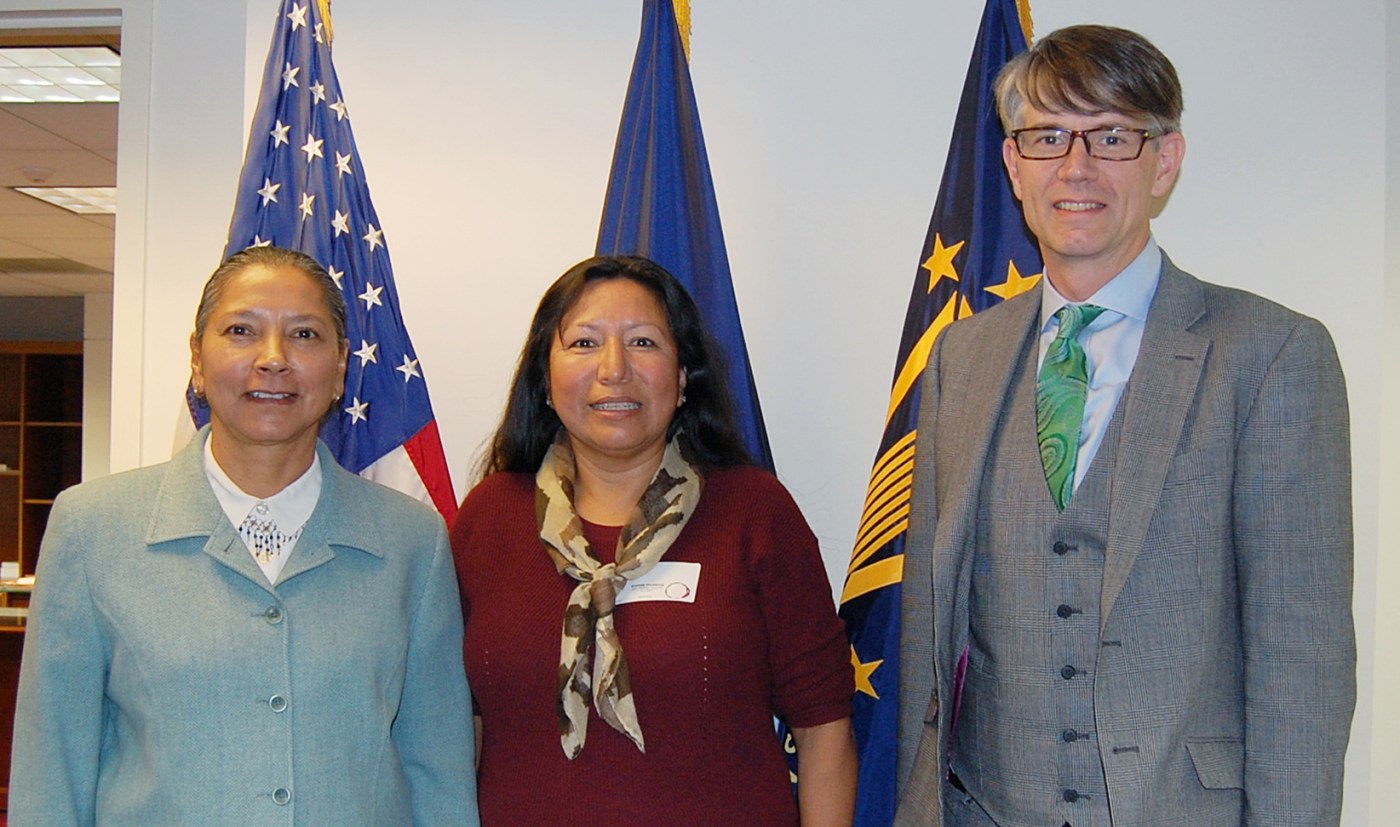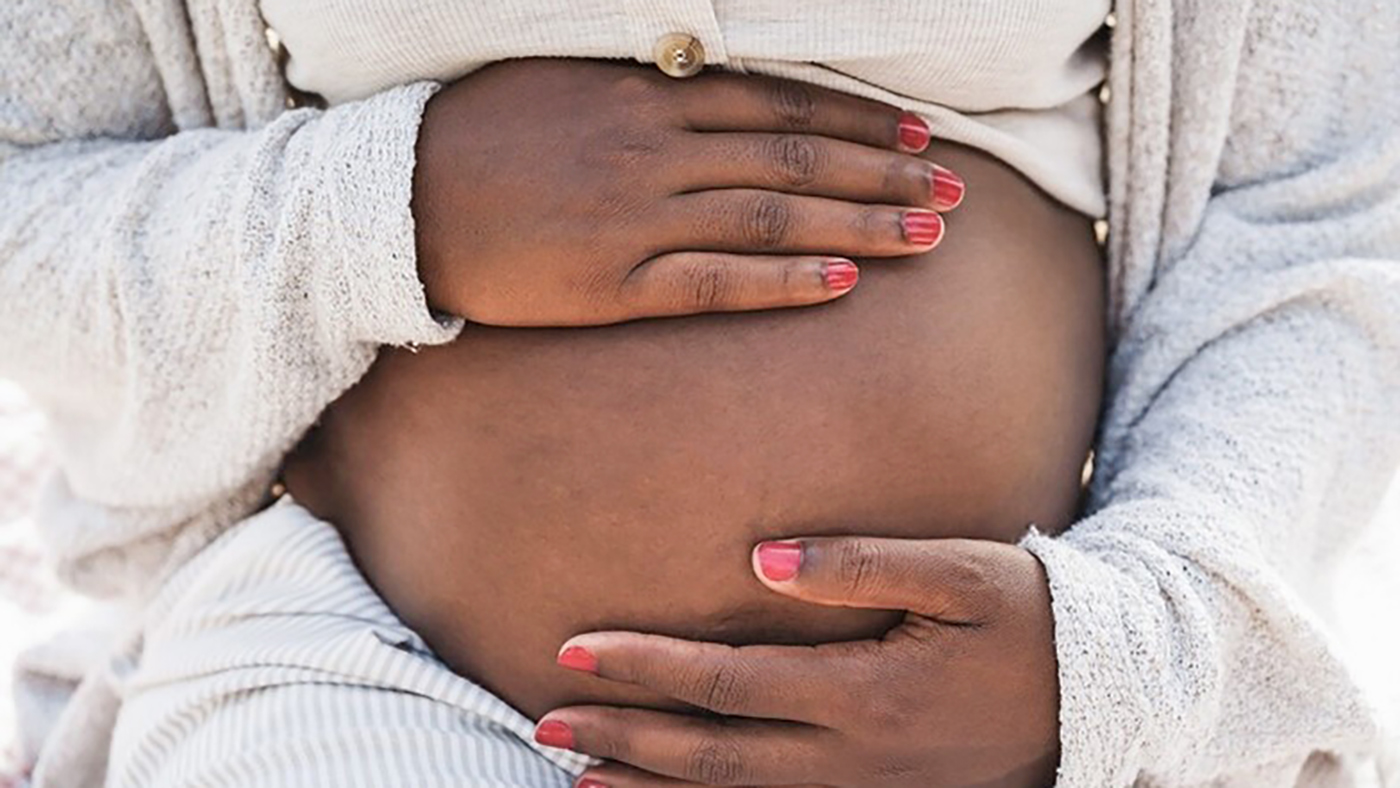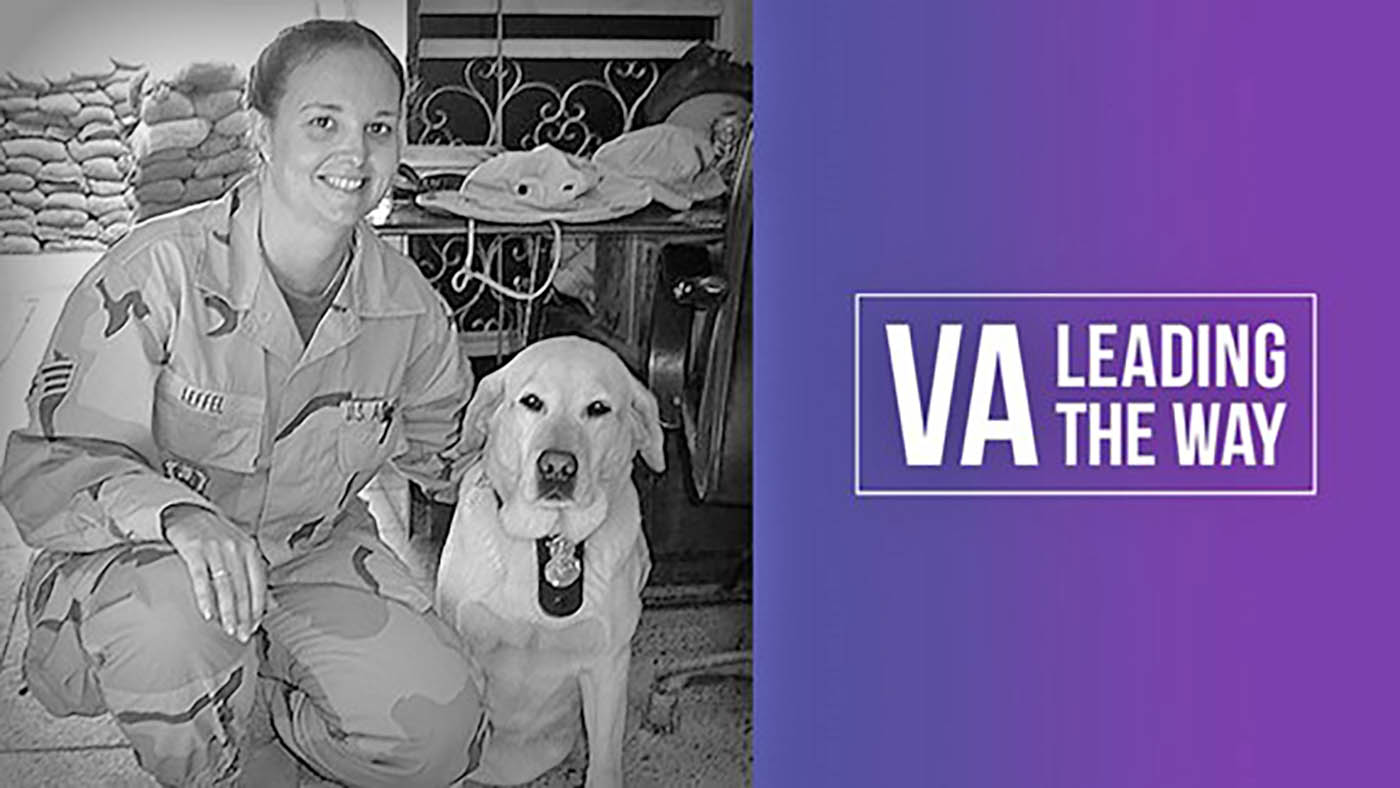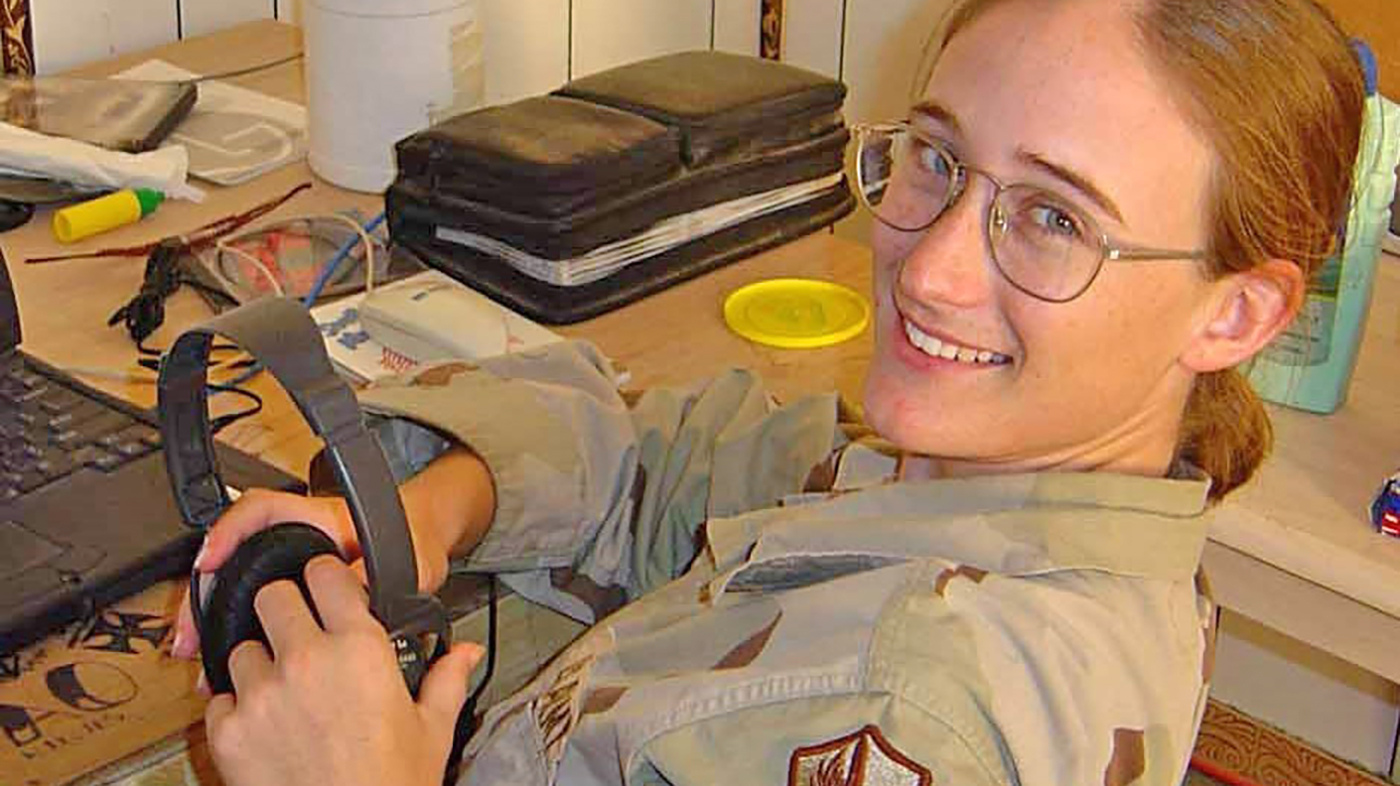As National Native American Heritage Month is coming to a close, I’m pleased to share this. This post is something of a departure from typical posts from the Veterans Legacy Program (VLP), in two ways. First, it comes from a conversation with two Veterans. Typically, VLP celebrates the legacy of Veterans who have passed and are interred in national cemeteries managed by VA’s National Cemetery Administration (NCA). But after I had the opportunity to speak with Ms. Mullen and Ms. McEwing, I felt that their message and example were well worth sharing.
The other way in which this post is a departure is in style. It is written like a newspaper article, because NCA’s Shawn Graham, a Navy Veteran and public affairs specialist, wrote this. So it reads quite differently than other VLP posts to date. But, it should. It shows another example of the professional diversity at NCA who contribute to sharing the legacy of Veterans. We all tell these stories of Legacy in different ways.
Please enjoy Shawn’s piece and what Ms. Mullen and Ms. McEwing had to share.
[Shawn’s words follow.]Honoring the Legacy of American Indian Veterans
WASHINGTON — This month, National Cemetery Administration (NCA) celebrates Native American cultures, histories and traditions, and at VA we celebrate the Native contributions in uniform. Native servicemembers have served in every conflict in the history of this republic with valor, honor and distinction. Dr. Bryce Carpenter, Educational Outreach Programs Officer, said NCA is working to share the stories of Veterans through the Veterans Legacy Program (VLP). VLP is actively reaching out to the diverse Veteran population to enhance memorialization and increase awareness of the service and sacrifice of all our nation’s Veterans.
As part of this effort, Dr. Carpenter spoke with two Native Veterans who shared their thoughts on their Veteran experience. “When people think of military heroes, American Indians and Alaska Natives may not come to mind,” said Juanita Mullen, American Indian & Alaska Native Veterans Liaison from the Office of the Secretary of Veterans Affairs. “Women are especially overlooked. Many people, from many different cultures have served this country and they all have a unique story.”
Ms. Mullen, an Air Force Veteran, said it was important to educate people about American Indian Veterans’ impact on the country’s history; past and present. She also said it was important to tap into the commonalities of military service.
“I’m proud to talk to people on the uniqueness of the different tribes and especially to the various federal agencies about the Veteran experience,” she said. “All Veterans have a unique bond and can immediately relate because of shared experiences. Those experiences make every Veteran a valuable asset in federal agencies and the private sector.”
According to the U.S. Department of Interior’s Bureau of Indian Affairs, there are 567 federally recognized nations of American Indians and Alaska Natives in the United States, composed of nearly 4.5 million American Indians and Alaska Natives, or 1.5 percent of the nation’s population.
Brenda McEwing, CEO of First Nations Women Warriors and an Army Veteran, said her military service helped her embrace other cultures while not forgetting her own.“The first thing the military taught me was teamwork,” Ms. McEwing stated. “The military taught me how important it was to understand different cultures and to respect your teammate’s unique experiences.”
“Everyone should take that first step in acknowledging that every Veteran contributes something,” Ms. McEwing said. “It’s important to understand history in order to appreciate it. My father, a World War II prisoner of war, taught me that many military qualities were transferrable, like character and honor.”
As of 2015, 16,910 American Indians or Alaska Natives serve in the armed forces, making up 1.3 percent of the military population.
In some of America’s most important, the volunteerism among Native Americans continues to impress and inspire. Dr. Herman Viola of the National Museum of the American Indian often shares that if all groups in America volunteered to serve in World War II at the same rate as Native volunteers, a draft would have been unnecessary.
“We must raise awareness and show the people who have worn the uniform and served the country. We must bring their stories to the rest of the country and highlight our strength,” said McEwing.
First Nations Women Warriors is a non-profit organization that was created in 2013 to raise awareness of women Veterans. Since its creation, the group has made special appearances as motivational, guest and keynote speakers at various events.
Topics in this story
More Stories
VA is committed to providing safe, accessible care that meets the unique challenges faced by black mothers.
Women Veterans are the fastest-growing Veteran population and VA has evolved its care to meet their needs.
March is Women’s History Month, a time to celebrate and […]









My thanks to all who commented. The Veterans Legacy Program (VLP) has been celebrating the Native tradition of uniformed service in several ways this month, and we aim to continue to do so as an integral and strategic goal of our program.
Please feel welcome to reach out to the Veterans Legacy Program with more feedback or comments about the Native tradition of military service. You can reach VLP here, through NCA’s Facebook page or Twitter feed, or by e-mail at VeteransLegacyProgram@va.gov.
Thank you for the recognition. Robin Harrell USAF veteran Haudenosaunee (Iroquois) tribe
This is the type of post I would love to share but when I try to it only takes me to the FB page where the story I want to post is nowhere to be found!
The VA has always been committed to it’s members and it’s surrounding community. Serving in the Army helped build the foundation that was desperately needed for me to succeed. As part of my success and in return, I try to educate others on things of matter.
I’d like to make it clear that the term “Indian” refers only to descendants of India. There is no exception. Anyone using the term “Indian” to describe anyone who is brown skin and dark hair is contributing to the act of discrimination that was long ago established by the Europeans who originally sailed to the Americas. The tribes of the Americas are not Indians, they are in general terms, Native Americans.
As an author, you should know this and this type of mistake should be avoided.
As we speak, a group of legal experts are being put together to combat the discrimination to the peoples of India and the loose term used for all peoples of brown skin and dark hair, especially in this country. As part of this group, it is my duty to educate you and as many people as necessary before lawsuits are filed.
Simply, there is no excuse for mistakes like this. Please be aware of this sensitive issue and use the term correctly. If needed, you should read the governments renaming of the tribes of the Americas. The information will provide information on how to address the indigenous people of the Americas.
Thank you for your thoughtful comment. It is the accepted usage among many people of the Native American community to refer to people in that community as “American Indians” and to use the term “Native American” as a proper adjective, or simply “Native.” Some will prefer one, or the other, or use both interchangeably. It’s always good to ask, when in doubt.
Using the correct and appropriate demonym is a sensitive issue; you are correct.
Thank you for your service, and for your interest and support of the Native legacy of military service.
How long does it take to receive a response from the VA when a veteran has a problem and nowhere else to turn (ME)>
The body of Captain Poulas 1st American Native commissioned officer in Washington’s Army is buried in Oneida Wisconsin
1. Bronze statue of Ira Hayes (Pima nation) on Marine Corps Memorial, Arlington, VA. He’s the one on the left of the monument.
2. Navaho (Dine) code talkers in WW2, Pacific theater.
See movies “The Outsider” with Tony Curtis and “Wind Talkers” with Nicholas Cage.